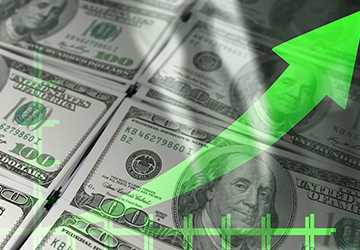Introduce
If you have more cash, you can think about how to use it most effectively. If your savings don't grow, inflation will leave you behind. A savings account may help. Earn up to a percentage interest on your account balance. Many consider high-yield savings accounts superior to standard ones because of the high-interest rates. But what's the catch? While the benefits of these accounts far outweigh their disadvantages, the disadvantages still exist.

How High-Yield Savings Accounts Work
Financial institutions now often offer high-interest savings accounts on their websites. With lower operating expenses, account holders should expect higher dividends. While the annualized percentage return (APY) is essential, there are other considerations for this account.
Minimum initial and ongoing balance requirements
A minimum amount of seed capital may be required to be withdrawn before APR is credited to the account. You may need to maintain some level of balance in the future. For example, a fund might offer a daily return of 0.45% on balances over $10,000 but a daily return of 0.70% on balances up to $10,000.
Monthly maintenance fee
Free and regular savings accounts are available. They all reduce the potential profit you may make.
Interest payment
Capital accrues interest daily and is usually paid monthly. Affirm calculates interest on your daily balance by dividing one by 365 times your APR by the amount in your account daily. This method is used to determine the amount of interest you will earn. Interest may increase. This makes you interested in investing. If you put $1,000 into a savings account that pays 1% APR plus interest per day, your balance will be $1,010.05 after one year instead of $1,010 and $1,105.17 after ten years instead of $1,100.
Withdrawal limit
Regulation D, which generally prohibits savings accounts from making more than six transactions or transfers per account reporting period, was temporarily lifted early in the COVID-19 outbreak. While Regulation D's maximum transfer/withdrawal rules are in effect, if you attempt to transfer or withdraw funds more than six times in a calendar month, your account may be closed, and a fee may be charged. As of July 2022, there will no longer be a legal requirement for this need, but some institutions may still have it.

How to Open a High-Yield Savings Account
Once you've selected the high-yield savings account that meets your needs, here's what to expect during the application process. Your new savings account will be activated, and once your information is verified, you can start earning money.
Set up an account
Most high-yield bank savings accounts can be accessed by creating an online account, which is required. Name, email address, password, and contact information are specific information needed for this process. Most companies will send you a verification code to enter on your mobile device. A disclosure and consent form may also be necessary in which you indicate your consent to receive information and communications electronically.
Provide personally identifiable information
Federal law requires banks to conduct identity checks on all new account holders. Your social security number, date of birth, information on your current bank accounts, and possibly even where you live.
Benefits of High-Interest Savings Accounts
The main benefit of a high-yield savings account is that it offers a higher annualized rate of return (APY) than other savings options. These accounts often offer higher interest rates than traditional local financial institutions. When interest rates are low, any interest you receive counts. A high-yield savings account also allows you to avoid paying service fees. Most online banks offer this type of account, and there are usually no ongoing fees. One explanation for this is that online banking tends to have lower overhead than brick-and-mortar banks. This enables them to offer discounted prices and costs to customers.
Diploma
An APY high-yield savings account can be a great middle-ground for your money because it gives you federal deposit insurance, protection for your initial investment, and higher returns than traditional savings accounts, but lower returns than you can invest, including higher risk than high-interest savings accounts. Please consider carefully how one or more high-yield accounts can best meet your financial goals and circumstances. The next step is to find a fund that meets your needs while maximizing your profits and minimizing fees.




